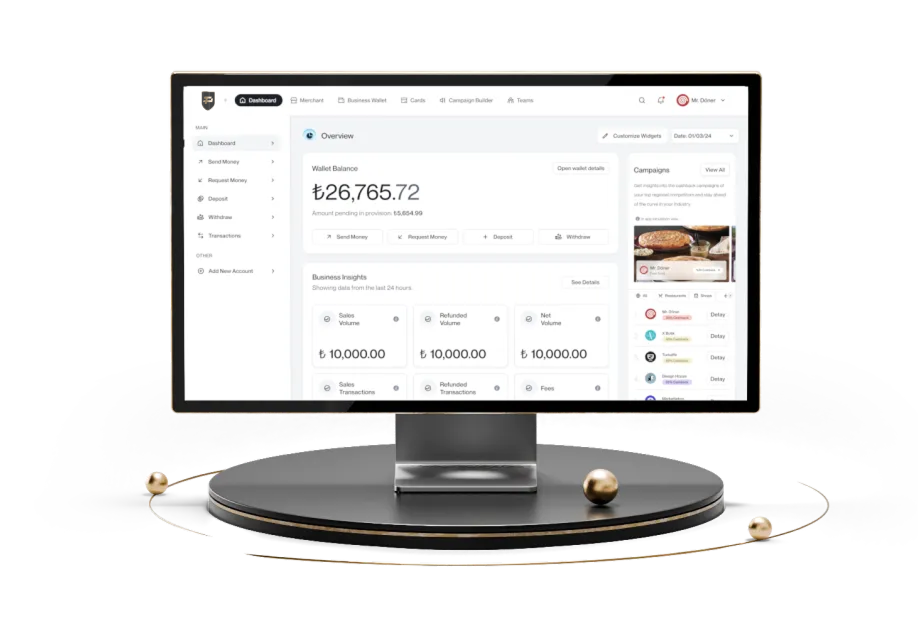What is the e-Invoice System?
In today’s business world, digital transformation is not only a technological preference but also a legal requirement. One of the most critical steps in this transformation is the transition of businesses from paper invoices to electronic invoicing. E-Invoice, with its speed, security, cost savings, and eco-friendly structure, facilitates company processes while being secured within the legal framework determined by the Revenue Administration (GİB). This system, which is becoming increasingly crucial for both small businesses and large-scale companies, plays a critical role in the digitalization of commercial life. In this Papel Blog article, we answer the questions of what the e-invoice system is, how it works, and what its advantages are.
What is the e-Invoice system?
The application that eliminates the obligation of businesses to issue paper invoices and transfers the entire process to the digital environment is called the e-invoice system. This system, which operates in accordance with the standards set by the Revenue Administration (GİB), ensures that issued invoices are prepared electronically and delivered to the recipient through the system. Thus, invoices both retain their legal validity and are sent and stored in a safer, faster, and easier way. Implemented in Turkey for the first time in 2010, this system has gradually become mandatory for specific sectors and businesses exceeding a certain turnover threshold. For example, companies with an annual gross sales revenue of 5 million TL or more, those engaged in e-commerce, or those involved in the trade of motor vehicles and real estate, are required to use e-invoices.
One of the most essential advantages of the e-invoice, an eco-friendly system, is that it provides cost and time savings. In addition to eliminating paper, printing, shipping, and archiving costs, it also reduces human errors. Businesses can instantly send invoices created in digital format to the other party, and these invoices can be archived electronically for easy access when needed. Businesses wishing to switch to the system must first obtain a financial seal or e-signature. Afterwards, registration procedures are carried out through the GİB’s e-invoice application portal. Businesses can either use the GİB’s own portal or benefit from the system via private integrator companies. Once all steps are completed, the necessary infrastructure to issue and receive e-invoices is established.

How does the e-Invoice work?
The e-invoice system works by businesses preparing their invoices electronically, signing them, and transmitting them to the recipient via the Revenue Administration (GİB). The process begins when the seller issues an e-invoice through their accounting software, the GİB portal, or private integrator software. The prepared invoice is converted into the UBL-TR format determined by the GİB and is approved with a financial seal or e-signature. Then, the invoice is sent to the GİB’s system; after verification here, it is transferred to the recipient. The recipient securely receives the invoice through the system and records it in their own accounting records. Both the seller and the buyer are required to keep this invoice digitally for at least 10 years. This eliminates costs such as paper, printing, and shipping, shortens processing time, and provides reliable archiving. There are three ways to join the system: using the GİB’s free portal, integrating one’s own system with the GİB, or using private integrator services. Especially for high-volume businesses, private integrators are more preferred as they offer unlimited invoicing, easy archiving, and 24/7 service advantages.
Advantages of e-Invoice
In today’s rapidly digitalizing world, the e-invoice system provides critical convenience in companies’ digital transformation journey, as it reduces the costs of physical components and significantly saves businesses' operational expenses. Another advantage of this system is that, since preparation and delivery processes take place digitally, the invoicing process is reduced to minutes; thus, significant time is saved, and collection processes accelerate. In addition, e-invoices are securely archived electronically, and the clutter of physical documents comes to an end; documents needed in the future can be accessed within minutes, and the risk of loss is eliminated. With its eco-friendly structure, it minimizes paper usage and contributes to the preservation of natural resources. Furthermore, digital processes reduce human errors, increase efficiency thanks to integration with accounting systems, and enable accuracy and fast tracking of transactions. All these advantages add professionalism and reliability to the company’s image, while also providing convenience in internal and external audits.

e-Invoice obligation and application areas
According to the communiqués on the Tax Procedure Law (VUK) published by the Revenue Administration, the e-invoice system becomes mandatory based on turnover and sector-based criteria. For example, as of 2022, businesses with a gross sales revenue of 3 million TL or more are required to switch to e-invoicing. As of 2025, this obligation has been updated to cover all such businesses. In addition, companies engaged in e-commerce sales, real estate or motor vehicle trading or leasing, and the accommodation sector (such as hotels and similar) with an annual turnover of 500,000 TL or more are also required to switch.
These obligations are not limited to turnover-based criteria. For instance, businesses in specific sectors such as fruit and vegetable brokerage or businesses producing and selling products subject to SCT (Special Consumption Tax) are required to switch to the e-invoice system regardless of turnover. In addition, for taxpayers who have switched to the e-invoice system, the transition to the e-ledger application also becomes mandatory starting from the following fiscal year; for example, a business that switches to e-invoicing in 2025 must switch to the e-ledger system as of January 1, 2026.
e-Invoice integration and usage guide
Every step of the transition process to the e-invoice system in Turkey must be carried out carefully both technically and administratively, and specific steps must be followed. For companies, the e-invoice integration and usage process begins with obtaining a financial seal (for legal entities) or e-signature (for natural persons); this certificate is obtained from the Public Certification Center affiliated with TÜBİTAK and may take approximately 2 days to several weeks to be issued electronically. Then, the e-Invoice Application Form and Undertaking are completed, signed, and submitted via the Revenue Administration’s (GİB) Interactive Tax Office portal or ebelge.gib.gov.tr, and the application is tracked. The choice of integration method used in the application plays a critical role: companies can either manage their low-volume transactions manually by choosing the GİB Portal method, directly integrate their own systems, or, most commonly, ensure that the system is comprehensively and automatically operated through GİB-approved private integrator companies. Once integration is established, integration with the company’s accounting, e-commerce, and ERP systems is provided; thus, e-invoices are automatically created, sent, and archived in the system. After installation is completed, trial invoices are issued in accordance with GİB’s test scenarios to confirm the accuracy of the transition, and compliance tests are carried out in the systems. When the tests are successfully passed, the system is approved by GİB, and the official use of e-invoices begins.
Sources: 1.
This blog post contains general information, not legal, financial, or investment advice. The content is prepared for informational purposes only, and you are advised to seek professional advice for your specific circumstances. The expressions in this article do not carry any binding nature or responsibility and reflect only the author’s evaluation. All your decisions are your responsibility, and Papel Electronic Money and Payment Services Inc. accepts no liability for any consequences arising from them.

